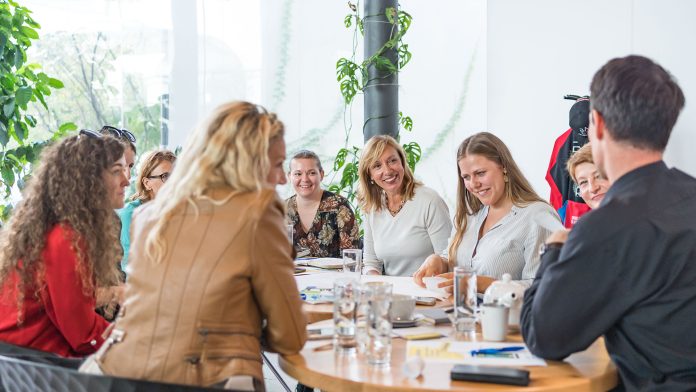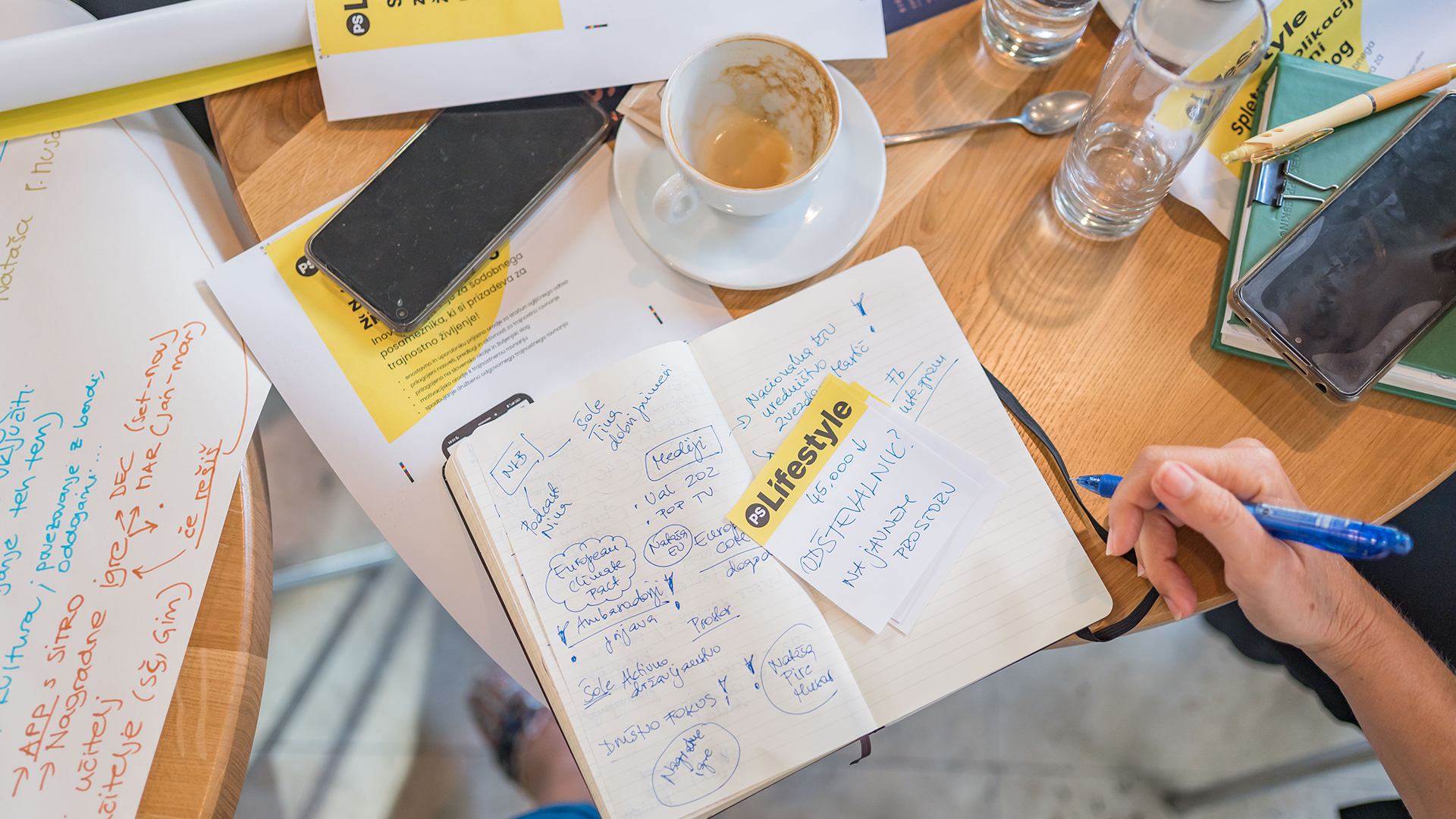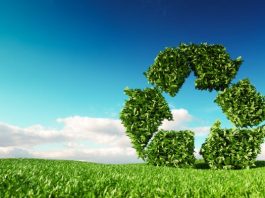Ladeja Godina Košir and Meta Pezdir from Circular Change explain how small lifestyle changes can make a major contribution to the global circular economy movement.
Founded in Slovenia in 2016, Circular Change is a stakeholder engagement platform designed to drive a circular transition by delivering a range of solutions, projects, reports, events and more. The organisation works with a strong international network to offer expert insights and support to stakeholders on their circular journey. Circular Change’s Founder and Executive Director, Ladeja Godina Košir, is a renowned circular economy expert and contributes to more than 50 international events each year, connecting with the global circular economy and sustainability leaders. Ladeja is also Co-chair of the European Circular Economy Stakeholder Platform (ECESP) in Brussels.
A significant part of Circular Change’s work is its participation in European projects designed to accelerate the circular economy. One project in particular that Circular Change is active in is the PSLifestyle project. PSLifestyle is an innovative carbon footprint calculator designed to provide insights on an individuals’ carbon footprint and offer suggestions on how to reduce it through lifestyle changes. Users of the tool will answer a series of questions as part of the ‘Lifestyle Test’, which was co-created with residents in a series of Living Labs workshops hosted in eight European countries: Estonia, Finland, Germany, Greece, Italy, Portugal, Slovenia, and Turkey. Meta Pezdir is Circular Change’s Project Manager for the PSLifestyle project.
Eager to learn more about the work of Circular Change as a whole and about the PSLifestyle tool, Editor Georgie Purcell spoke with Ladeja Godina Košir and Meta Pezdir.
Can you provide an overview of Circular Change and its objectives?
Ladeja Godina Košir (LGK): Circular Change is a private, non-profit organisation. It was founded as my personal ambition to contribute to the circular transformation, not only nationally but on a European and global level.
Our slogan, ‘we are the best entry point for your circular economy journey’, already says a lot about our mission and position. We are networkers by heart and have a good overview of the circular economy on a global level, having worked in this area for almost ten years. Since then, we have not only been observing but also actively participating in many projects.
The main purpose of our work is to follow the development of the circular economy. Initially, we focused on informing others about the concept of circular economy, and then broadened our efforts to include engagement. We wanted to engage a variety of stakeholders, and we are doing that throughout different projects on different levels.
Can you elaborate on key successes since the organisation’s launch?
LGK: At Circular Change, we do not measure success primarily based on business growth or increased profit. Of course, it is important that we remain financially balanced to match any costs incurred, but the most important impact for us is related to social and environmental dimension. From my perspective, our major success is in the engagement we have achieved with so many stakeholders around the world. It is hard to count how many people have attended the workshops and events we have hosted over the years. Informing, engaging, and connecting people has been our biggest impact and is our proudest achievement.
Another component is being pioneers of topics that we related to circular economy. When we started, circular economy was related mainly to recycling and waste management, and non-governmental organisations (NGOs) were the most active in the field. We set out to prove it is much more than that. On a national and European level, we encouraged creative industries to become more engaged with and more relevant to the transformation. It is not only about business models, but also about out-of-the-box thinking and creative spirit. Designers and storytellers can contribute a lot.
Additionally, we also targeted transition brokers. Throughout our work, we have learnt that we need orchestrators of the processes. It is relatively easy to get people around the table, but you need a leader with certain competencies to lead and orchestrate such a transformative process. We collaborated with Professor Jacqueline Cramer from the Netherlands to promote awareness of the role of transition brokers.
Another dimension of our work is culture and values. Whenever we talk about circular economy, we start with the values. You cannot just copy and paste concepts from one country to another – you must understand the background, history, lifestyle, preferences, etc. In 2016, we introduced Circular Triangle – a model which connects circular culture, circular economy, and circular change. As I said previously, one is related to the values of the citizens and their behaviour, one is more connected to the business models and economy, and the third relates to the circular transformation
of the whole policy model. We believe that, without this systemic approach, transformation cannot actually happen.
Can you elaborate more on the PSLifestyle project?
Meta Pezdir (MP): The PSLifestyle project is a Horizon 2020 project funded by the European Union. It stands for positive, sustainable lifestyle. The project originated in Finland and is led by a Finnish institute called SITRA. SITRA invented the carbon footprint calculator for individuals, which was well received in Finland. Around 1.4 million Finns completed the test, and SITRA gained interest from institutes in other European countries that were keen to have the test in their countries. Following funding from the EU, there are now 16 project partners from eight European countries working on distributing and adapting this calculator for other countries.
The main idea of the project is to promote sustainable lifestyle, but in a positive way. We want to highlight that every individual has their own lifestyle and that we can help the earth by changing our lifestyles, but in a positive way that doesn’t hurt us and that is tailormade. First, we must determine what your lifestyle is now. To do this, we created a ‘Lifestyle Test’ calculator with around 30 questions and four categories: lifestyle, transport, food, and other consumption. Participants answer a series of simple questions and then receive a result based on their answers. In addition, we provide 100 actions. Participants can choose which action they would like to do and are then immediately presented with a calculation measuring the percentage by which the action will reduce their carbon footprint. For example, the action to fly less could reduce their carbon footprint by 40%. However, if the individual doesn’t choose to fly less, the calculator presents alternative actions to achieve this 40% reduction.
How do the ‘Living Labs’ workshops contribute to the development of the tool?
MP: As I said before, the calculator was working in Finland but we needed to adapt it to local countries and add some additional features to it. The use of Living Labs was introduced because we wanted to understand what lifestyle means to the users. We needed to make sure that they understood the questions in the test and that the questions were relevant to them. We met with citizens on six occasions in each of the eight countries to test every important step. We also wanted to make sure that they understood the translations. Through this process, we identified certain issues related to relevancy and translation and were able to adapt the test accordingly to resolve such problems.
Why is it important to engage the community in circular practices?
MP: Not just in circular practice but overall, when you’re trying to understand and bring something new to the market, it is important to get the opinions of the users. However, I think that people sometimes get scared when it comes to circularity. Community involvement from the start of a project helps to build a connection with the end users and enables us to ensure that the product will fit with their needs. At the end, we want the user to be excited about the product and tell others about it. Community is one of the key pillars of Circular Change and it is very natural for us to engage the community in all our practices.
What are the key challenges in implementing circular change at a systemic level, and how can they be overcome?
LGK: One of the major challenges we encounter when implementing circular economy roadmaps is the necessity of collaborating with governments, as they are key stakeholders in the process. While government engagement is crucial, the transformation required must extend beyond any single political mandate. This often presents difficulties, as each new administration tends to prioritise its own initiatives, rather than continuing and advancing the work already in progress. As a result, maintaining continuity and ensuring the successful implementation of these roadmaps can be a significant challenge.
Another challenge is trying to align the thinking of different sectors. For example, the business sector may not be aware of what is happening in agriculture and those in agriculture may not be particularly interested in mobility. Despite this, these sectors and segments are interconnected and interdependent. This brings us back to the importance of transition brokers. We need to take the bigger picture of different stakeholders with different interests and agendas, and help to align those agendas and create something tangible. We also need to create action plans for transformation.
Additionally, many people today experience significant anxiety and pressure due to the overwhelming challenges like climate change and conflicts in Europe. These issues can lead to doubts about the impact of individual efforts. That is why we are not only advocating for a positive, sustainable lifestyle but also encouraging a mindset shift. We want individuals to realise that they can make a difference without feeling burdened or that they must sacrifice. Our message is clear: there is no judgment, and we reject the notion of “you’re either with us or against us.” True, lasting change comes from leading a balanced and inclusive life.
What’s next for the PSLifestyle project?
MP: The PSLifestyle project is officially ending in September 2025, but we don’t want our years of work to be wasted. The tool is free and everyone can access it. We also have a European version available now in English so all European citizens can test themselves. This was our first step towards the sustainability of the project beyond the deadline. We have already established a leadership group within the project consortia with a clear and bold ambition: to elevate PSL into a global tool, accessible to everyone. We are building a robust network of partners and supporters, and we actively invite all those interested in contributing to join us in this transformative effort.
What are the next steps for implementing and scaling up circular practices globally? How will Circular Change support these developments?
LGK: We are engaged in several projects working to implement and accelerate circular practice.
One example of our work is the global initiative for circular economy roadmaps, led by Chatham House in the UK. We’ve been involved since its inception over two years ago, helping to engage countries and organisations worldwide.
An important aspect of my work is co-chairing the European Circular Economy Stakeholder Platform (ECESP) – a role I’ve held for seven years. As we enter a new chapter of the platform, our focus is shifting towards stronger internationalisation and collaboration with other continents, advancing what I call ‘circular diplomacy’.
The Circular Change team is also deeply committed to education, from facilitating circular economy programmes and summer schools to teaching basics of circular economy to young children. Through my keynotes around the globe, I aim to inspire critical thinking and encourage people to co-create solutions that align with the future we envision.
Please note, this article will also appear in the 19th edition of our quarterly publication.










